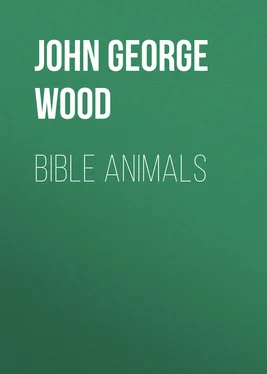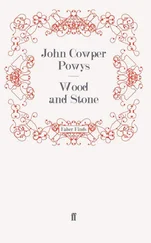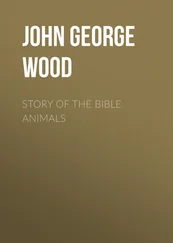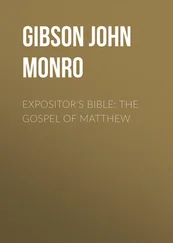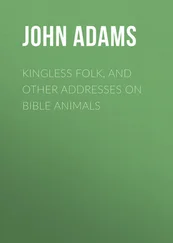John George Wood - Bible Animals
Здесь есть возможность читать онлайн «John George Wood - Bible Animals» — ознакомительный отрывок электронной книги совершенно бесплатно, а после прочтения отрывка купить полную версию. В некоторых случаях можно слушать аудио, скачать через торрент в формате fb2 и присутствует краткое содержание. Жанр: foreign_prose, foreign_religion, Философия, foreign_psychology, foreign_antique, на английском языке. Описание произведения, (предисловие) а так же отзывы посетителей доступны на портале библиотеки ЛибКат.
- Название:Bible Animals
- Автор:
- Жанр:
- Год:неизвестен
- ISBN:нет данных
- Рейтинг книги:3 / 5. Голосов: 1
-
Избранное:Добавить в избранное
- Отзывы:
-
Ваша оценка:
- 60
- 1
- 2
- 3
- 4
- 5
Bible Animals: краткое содержание, описание и аннотация
Предлагаем к чтению аннотацию, описание, краткое содержание или предисловие (зависит от того, что написал сам автор книги «Bible Animals»). Если вы не нашли необходимую информацию о книге — напишите в комментариях, мы постараемся отыскать её.
Bible Animals — читать онлайн ознакомительный отрывок
Ниже представлен текст книги, разбитый по страницам. Система сохранения места последней прочитанной страницы, позволяет с удобством читать онлайн бесплатно книгу «Bible Animals», без необходимости каждый раз заново искать на чём Вы остановились. Поставьте закладку, и сможете в любой момент перейти на страницу, на которой закончили чтение.
Интервал:
Закладка:
The cattle are branded with the mark of their owners, so that in these large herds there might be no difficulty in distinguishing them when they were re-captured for the plough and the cart. On one of the Egyptian monuments there is a very interesting group, which has furnished the idea for the plate which illustrates this article. It occurs in the tombs of the kings at Thebes, and represents a ploughing scene. The simple two-handled plough is being dragged by a pair of cows, who have the yoke fastened across the horns instead of lying on the neck, and a sower is following behind, scattering the grain out of a basket into the newly-made furrows. In front of the cows is a young calf, which has run to meet its mother, and is leaping for joy before her as she steadily plods along her course.
The action of both animals is admirably represented; the steady and firm gait of the mother contrasting with the light, gambolling step and arched tail of her offspring. Both are branded with the same mark, namely, three equal-armed crosses, one on the haunch, another on the side, and a third on the neck. The driver carries the whip, or koorbash, which has been already mentioned, and which is familiar to travellers in Southern Africa under the title of "sjambok."
In the olden times of the Israelitish race, herd-keeping was considered as an honourable occupation, in which men of the highest rank might engage without any derogation to their dignity. We find, for instance, that Saul himself, even after he had been appointed king, was acting as herdsman when the people saw the mistake they had made in rejecting him as their monarch, and came to fetch their divinely-appointed leader from his retirement. (See 1 Sam. xi. 5.) Doeg, too, the faithful companion of Saul, was made the chief herdsman of his master's cattle, so that for Saul to confer such an office, and Doeg to accept it, shows that the post was one of much honour. And afterwards, when David was in the zenith of his power, he completed the organization of his kingdom, portioning out not only his army into battalions, and assigning a commanding officer to each battalion, but also appointing a ruler to each tribe, and setting officers over his treasury, over the vineyards, over the olive-trees, over the storehouses, and over the cattle. And these offices were so important that the names of their holders are given at length in 1 Chron. xxvii. those of the various herdsmen being thought as worthy of mention as those of the treasurers, the military commanders, or the headmen of the tribes.
Before concluding this necessarily short account of the domesticated oxen of Palestine, it will be needful to give a few lines to the animal viewed in a religious aspect. Here we have, in bold contrast to each other, the divine appointment of certain cattle to be slain as sacrifices, and the reprobation of worship paid to those very cattle as living emblems of divinity. This false worship was learned by the Israelites during their long residence in Egypt, and so deeply had the customs of the Egyptian religion sunk into their hearts, that they were not eradicated after the lapse of centuries. It may easily be imagined that such a superstition, surrounded as it was with every external circumstance which could make it more imposing, would take a powerful hold of the Jewish mind.
Chief among the multitude of idols or symbols was the god Apis, represented by a bull. Many other animals, specially the cat and the ibis, were deeply honoured among the ancient Egyptians, as we learn from their own monuments and from the works of the old historians. All these creatures were symbols as well as idols, symbols to the educated and idols to the ignorant.
None of them was held in such universal honour as the bull Apis. The particular animal which represented the deity, and which was lodged with great state and honour in his temple at Memphis, was thought to be divinely selected for the purpose, and to be impressed with certain marks. His colour must be black, except a square spot on the forehead, a crescent-shaped white spot on the right side, and the figure of an eagle on his back. Under the tongue must be a knob shaped like the sacred scarabæus, and the hairs of his tail must be double.
This representative animal was only allowed to live for a certain time, and when he had reached this allotted period, he was taken in solemn procession to the Nile, and drowned in its sacred waters. His body was then embalmed, and placed with great state in the tombs at Memphis.
After his death, whether natural or not, the whole nation went into mourning, and exhibited all the conventional signs of sorrow, until the priests found another bull which possessed the distinctive marks. The people then threw off their mourning robes, and appeared in their best attire, and the sacred bull was exhibited in state for forty days before he was taken to his temple at Memphis. The reader will here remember the analogous case of the Indian cattle, some of which are held to be little less than incarnations of divinity.
Even at the very beginning of the exodus, when their minds must have been filled with the many miracles that had been wrought in their behalf, and with the cloud and fire of Sinai actually before their eyes, Aaron himself made an image of a calf in gold, and set it up as a symbol of the Lord. That the idol in question was intended as a symbol by Aaron is evident from the words which he used when summoning the people to worship, "To-morrow is a feast of the Lord" (Gen. xxxii. 5). The people, however, clearly lacked the power of discriminating between the symbol and that which it represented, and worshipped the image just as any other idol might be worshipped. And, in spite of the terrible and swift punishment that followed, and which showed the profanity of the act, the idea of ox-worship still remained among the people.
Five hundred years afterwards we find a familiar example of it in the conduct of Jeroboam, "who made Israel to sin," the peculiar crime being the open resuscitation of ox-worship. "The king made two calves of gold and said unto them, It is too much for you to go up to Jerusalem: behold thy gods, O Israel, which brought thee up out of the land of Egypt. And he set the one in Bethel, and the other put he in Dan.... And he made an house of high places, and made priests of the lowest of the people, which were not of the tribe of Levi. And Jeroboam ordained a feast … like unto the feast in Judah, and he offered upon the altar. So did he in Bethel, sacrificing unto the calves that he had made."
Here we have a singular instance of a king of Israel repeating, after a lapse of five hundred years, the very acts which had drawn down on the people so severe a punishment, and which were so contrary to the law that they had incited Moses to fling down and break the sacred tables on which the commandments had been divinely inscribed. Nothing is omitted: the shape of the idol, the material of which it is composed, the offerings, and the very words in which Aaron had so deeply sinned, "Behold thy gods, O Israel, which brought thee up out of the land of Egypt." Successive monarchs followed his example, and, according to the graphic words of Scripture, they "departed not from the ways of Jeroboam the son of Nebat, who made Israel to sin."
As was likely to be the case in a land where cattle were of such importance, and often formed the principal wealth of the inhabitants, many words were in use to distinguish the cattle according to sex, age, and number. Thus, Bakar signifies the adult animal of either sex, the test of full growth being fitness for the plough. Consequently, Ben-Baka, or son of the herd, signifies a male calf, and Aiglah-Bakar, a female calf. The term Bakar is derived from a Hebrew word signifying to cleave or plough, and hence it is used as to signify those animals which are old enough to be put to the plough.
Читать дальшеИнтервал:
Закладка:
Похожие книги на «Bible Animals»
Представляем Вашему вниманию похожие книги на «Bible Animals» списком для выбора. Мы отобрали схожую по названию и смыслу литературу в надежде предоставить читателям больше вариантов отыскать новые, интересные, ещё непрочитанные произведения.
Обсуждение, отзывы о книге «Bible Animals» и просто собственные мнения читателей. Оставьте ваши комментарии, напишите, что Вы думаете о произведении, его смысле или главных героях. Укажите что конкретно понравилось, а что нет, и почему Вы так считаете.
